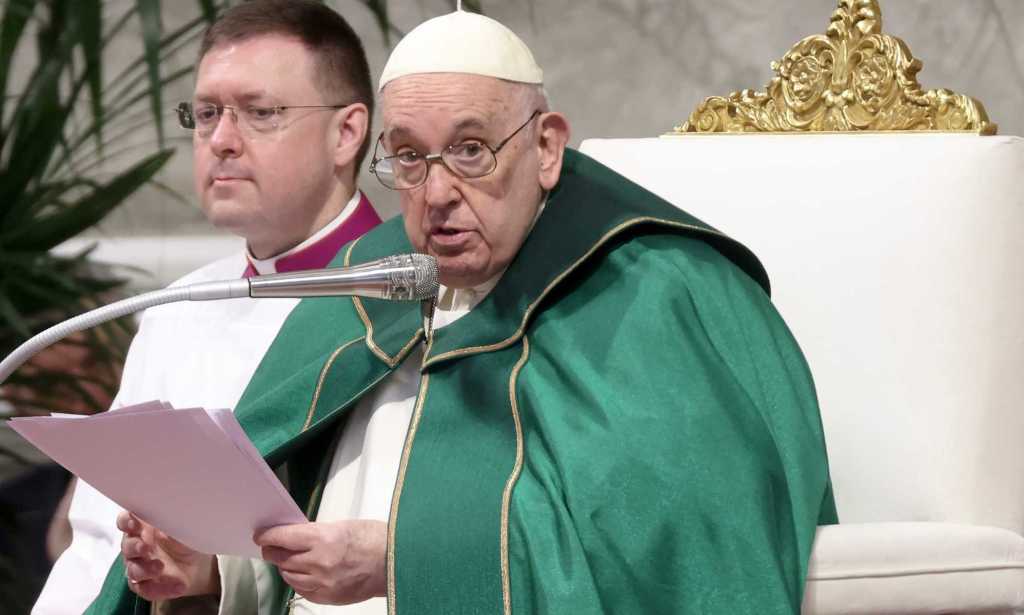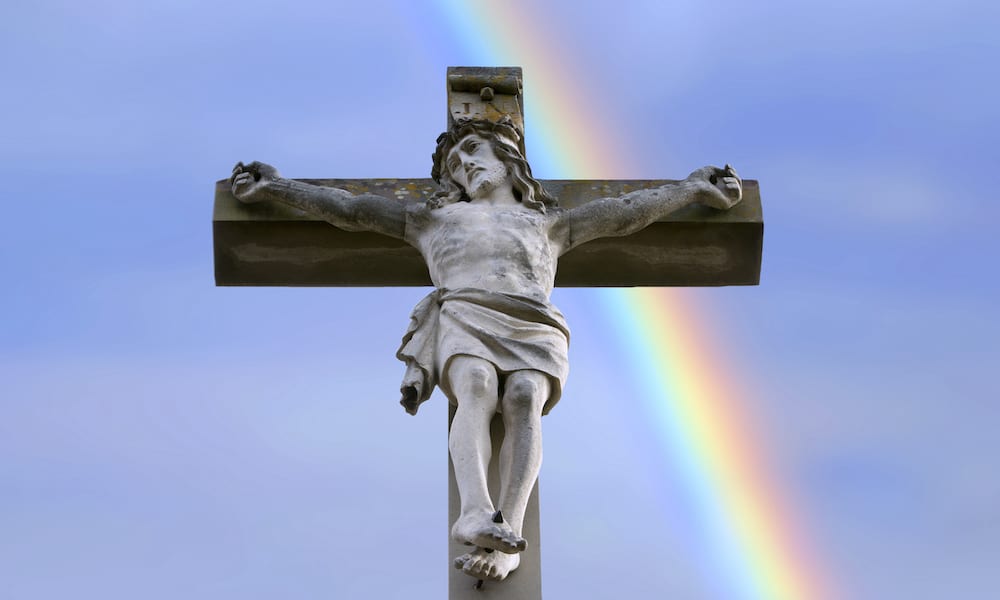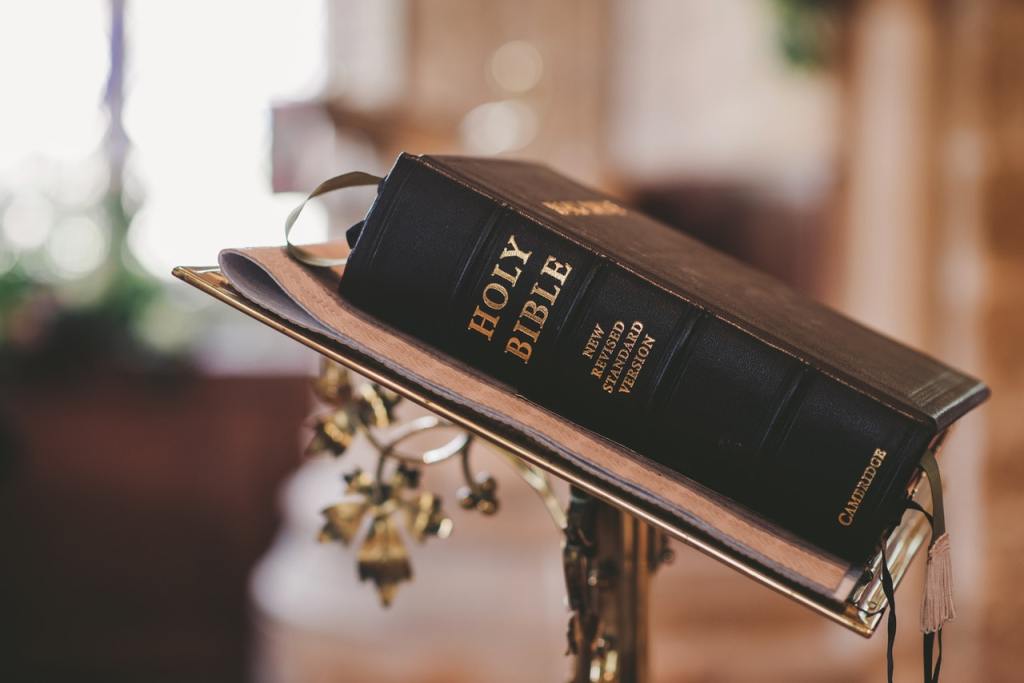What does the Bible say about homosexuality? For starters, Jesus wasn’t a homophobe

The Bible shows Jesus interpreted scripture in an inclusive way. (GraphicaArtis/Getty)
When Pope Francis was asked about his views on homosexuality in February, he reportedly replied: “This [laws around the world criminalising LGBTQ+ people] is not right.
“Persons with homosexual tendencies are children of God. God loves them. God accompanies them … condemning a person like this is a sin. Criminalising people with homosexual tendencies is an injustice.”
This isn’t the first time Pope Francis has shown himself to be a progressive leader when it comes to, among other things, gay Catholics.
It’s a stance that has drawn the ire of some high-ranking bishops and ordinary Catholics, both on the African continent and elsewhere in the world.
Some of these Catholics may argue that Pope Francis’s approach to LGBTQ+ matters is a misinterpretation of Scripture (or the Bible). But is it?
Scripture is particularly important for Christians. When church leaders refer to “the Bible” or “the Scriptures”, they usually mean “the Bible as we understand it through our theological doctrines”. The Bible is always interpreted by our churches through their particular theological lenses.

As a biblical scholar, I would suggest that church leaders who use their cultures and theology to exclude homosexuals don’t read Scripture carefully. Instead, they allow their patriarchal fears to distort it, seeking to find in the Bible proof-texts that will support attitudes of exclusion.
There are several instances in the Bible that underscore my point.
Love of God and neighbour
Mark’s Gospel, found in the New Testament, records that Jesus entered the Jerusalem temple on three occasions. First, he visited briefly, and “looked around at everything” (11:11).
On the second visit he acted, driving “out those who were buying and selling in the temple, and overturned the tables of the money changers and the seats of those who were selling doves” (11:15). Jesus specifically targeted those who exploited the poorest of the people coming to the temple.
On his third visit, Jesus spent considerable time in the temple itself (11:27-13:2). He met the full array of temple leadership, including chief priests, teachers of the law and elders. Each of these leadership sectors used their interpretation of Scripture to exclude rather than to include.
The “ordinary people” (11:32 and 12:12) recognised that Jesus proclaimed a gospel of inclusion. They eagerly embraced him as he walked through the temple.
In Mark 12:24, Jesus addresses the Sadducees, who were the traditional high priests of ancient Israel and played an important role in the temple. Among those who confronted Jesus, they represented the group that held to a conservative theological position and used their interpretation of the Scripture to exclude. Jesus said to them: “Is this not the reason you are mistaken, that you do not understand the Scriptures or the power of God?”

Jesus recognised that they chose to interpret Scripture in a way that prevented it from being understood in non-traditional ways. Thus they limited God’s power to be different from traditional understandings of him. Jesus was saying God refused to be the exclusive property of the Sadducees. The ordinary people who followed Jesus understood that he represented a different understanding of God.
This message of inclusion becomes even clearer when Jesus is later confronted by a single scribe (12:28). In answer to the scribe’s question on the most important laws, Jesus summarised the theological ethic of his gospel: love of God and love of neighbour (12:29-31).
Inclusion, not exclusion
Those who would exclude homosexuals from God’s kingdom choose to ignore Jesus, turning instead to the Old Testament – most particularly to Genesis 19, the destruction of the cities of Sodom and Gomorrah. Their interpretation of the story is that it is about homosexuality. It isn’t. It relates to hospitality.
The story begins in Genesis 18 when three visitors (God and two angels, appearing as “men”) came before Abraham, a Hebrew patriarch. What did Abraham and his wife Sarah do? They offered hospitality.
The two angels then left Abraham and the Lord and travelled into Sodom (19:1) where they met Lot, Abraham’s nephew. What did Lot do? He offered hospitality. The two incidents of hospitality are explained in exactly the same language.
The “men of Sodom” (19:4), as the Bible describes them, didn’t offer the same hospitality to these angels in disguise. Instead they sought to humiliate them (and Lot (19:9)) by threatening to rape them. We know they were heterosexual because Lot, in attempting to protect himself and his guests, offered his virgin daughters to them (19:8).

Heterosexual rape of men by men is a common act of humiliation. This is an extreme form of inhospitality. The story contrasts extreme hospitality (Abraham and Lot) with the extreme inhospitality of the men of Sodom. It is a story of inclusion, not exclusion. Abraham and Lot included the strangers; the men of Sodom excluded them.
Clothed in Christ
When confronted by the inclusive gospel of Jesus and a careful reading of the story of Sodom as one about hospitality, those who disavow Pope Francis’s approach will likely jump to other Scriptures. Why? Because they have a patriarchal agenda and are looking for any Scripture that might support their position.
But the other Scriptures they use also require careful reading. Leviticus 18:22 and 20:13, for example, are not about “homosexuality” as we now understand it – as the caring, loving and sexual relationship between people of the same sex. These texts are about relationships that cross boundaries of purity (between clean and unclean) and ethnicity (Israelite and Canaanite).
In Galatians 3:28 in the New Testament, Paul the apostle yearns for a Christian community where “there is no longer Jew or Greek, there is no longer slave or free, there is no longer male and female; for all of you are one in Christ Jesus.”
Paul built his theological argument on the Jew-Greek distinction, but then extended it to the slave-free distinction and the male-female distinction. Christians – no matter which church they belong to – should follow Paul and extend it to the heterosexual-homosexual distinction.
We are all “clothed in Christ” (3:27): God only sees Christ, not our different sexualities.![]()
This article is republished from The Conversation under a Creative Commons license. Read the original article.

